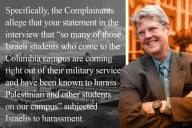You have /5 articles left.
Sign up for a free account or log in.

Nastia11/istock/getty images
As an educator, I get a lot of requests for more time from students. More time for a paper, for a quiz, for an exam. During the pandemic, I had many requests for a Zoom link to my live class.
Most faculty members want to be flexible and compassionate educators. While those attributes foster positive faculty-student interactions in the best of times, they are vital in the worst of times. And many parts of the last two years have felt like the worst of times.
Teaching during COVID has evolved through basically four stages: 1) the pivot to emergency remote teaching, 2) remote teaching, 3) the return to campuses last fall and 4) how we’re teaching today. Reflecting on that evolution supports the value of instructors being compassionate, clear, organized, multifaceted and engaging—or what I call CCOMFE. But especially over the last few weeks, a key challenge has arisen: faculty members are being inundated with requests for accommodations ranging from extensions, make-up exams, extra-credit opportunities and Zoom options to substitute for in-person attendance.
How can educators be fair yet, at the same time, not be taken advantage of? Walking the line can be difficult. How can they best manage requests for accommodations? Attempting to respond on a case-by-case basis is exhausting and a suboptimal solution. If you are confronting these dilemmas, here are some considerations to help with managing student requests.
First, remember that students are reporting that they are as exhausted, stressed and fatigued by the pandemic as educators are. Before the pandemic, some faculty members would look askance at upticks in the frequency of student absences due to losses in the family, often going to the extreme of asking for death certificates. While insulting and hurtful to many students and implying a lack of trust, the equivalent today is asking for proof of a positive COVID test to justify an absence. In addition to taxing an overburdened health-care system and evoking HIPAA and FERPA issues, requesting such certificates creates more work for all concerned. The confluence of stressors may elevate already rising mental health issues. A simple solution: put more trust in what students say. If they are lying, let that be on their conscience. What they miss from an absence—or the effort to make it up—is already a punishment.
You should also be aware that a multitude of requests for extra time to complete assignments may be an indicator that your course-design calibration needs some work. During the second phase of the evolution of teaching, the remote stage, many classes showed engorged syllabi as faculty members aimed to increase assignments to make up for not teaching in person. With the additional stress of the pandemic, normally manageable class loads may become less manageable. Sometimes educators feel pressured to cover all the content or hold to their standards of rigor. While both are commendable and understandable, you should be open to modification. Are the assignments and assessments mapping onto the course learning outcomes? Maybe there is more leeway in your design than you know.
That said, reworking course design and content is a fine agenda item for the next time you teach a course. But how can you best cope with all the requests from students in your classes right now? I offer a philosophical answer and some pragmatic ones.
An important starting place is for instructors to have a clear idea of what is really important to them and why. If you require attendance, why do you do so? When you set a due date, why can the student not turn the assignment in a little later? Examine your teaching philosophy and have a clear idea of what you do not want to budge on—and why—and what you are willing to be flexible on. Often, reviewing guides on the scholarship of teaching and learning can help you make your decisions.
Once you are clear on what you are willing to be flexible about, be fair and clear about your policies and as specific as possible. If you are open to students turning material in late, is it for any reason or only for COVID-related reasons—and is it fair to make the distinction? Every student should have the same options.
I taught 400 students during fall 2021. Most students were exuberant to return to the classroom, but to minimize possible issues, my course policies allowed students to take extra time on any of their assignments except exams. The reason could be if they were not feeling great, had COVID or were dealing with some other emergency. In any of those cases, they did not have to email me or let me know to get the extension. There would be no late penalties and no need for doctor, parent or peer notes. This decision cut down on potentially hundreds of emails and a lot of hassle on their parts and mine.
It worked well. I saw no evidence that learning suffered. If anything, those allowances enhanced learning, according to student testimonies. Objectively, student exam scores were not significantly different from those for the same class taught before or during the early stages of COVID. My student evaluations were perhaps some of the highest they have ever been.
Not all of you who are instructors may be ready to be as flexible. Some of you may be ready to be more so next term and perhaps are even planning to redesign a course or include more CCOMFE into your syllabi and classes. But I can offer some more pragmatic solutions that you can consider right away:
- Once you are clear about where you stand with allowances, broadcast them to the class immediately, even midstream in the term.
- Post clear statements about your policies on late assignments, penalties and absences—or modifications of them if those you started the term with no longer hold.
- Discuss those changes in class, and make it clear why you have those policies.
- Be straightforward about what you will not allow and why.
- Set availability dates to keep assignments visible in your LMS beyond due dates to give all students the opportunity for late submissions
- Create one common response you can use for all requests for accommodations that elucidates your position. Cut and paste it into your response to emails and requests you receive. (One trick is to create it as a signature file and then add that signature to a request).
- Different class sizes—whether large lecture or small discussion—and class levels (first year, final year) may allow for different allowances. But avoid case-by-case decisions— instead, have a standard position.
- Most important, know that it is OK to say no. While being fair and flexible is a worthy goal, being firm also helps your students. When you show you are open to change and that your decisions are not random but tied to a philosophy of education, holding firm is justified.
- You may want to run your position on allowances by your supervisor so they can support you. This can be important, as some supervisors may want the entire department to offer students a level of flexibility and compassion.
Teaching effectively is a demanding proposal, and it got substantially more difficult during the pandemic. We will undoubtedly face more challenges down the road. If we are prepared to cope with students’ concerns and fears, even if it means re-examining our philosophies, it will help us all get through these difficult times better.








